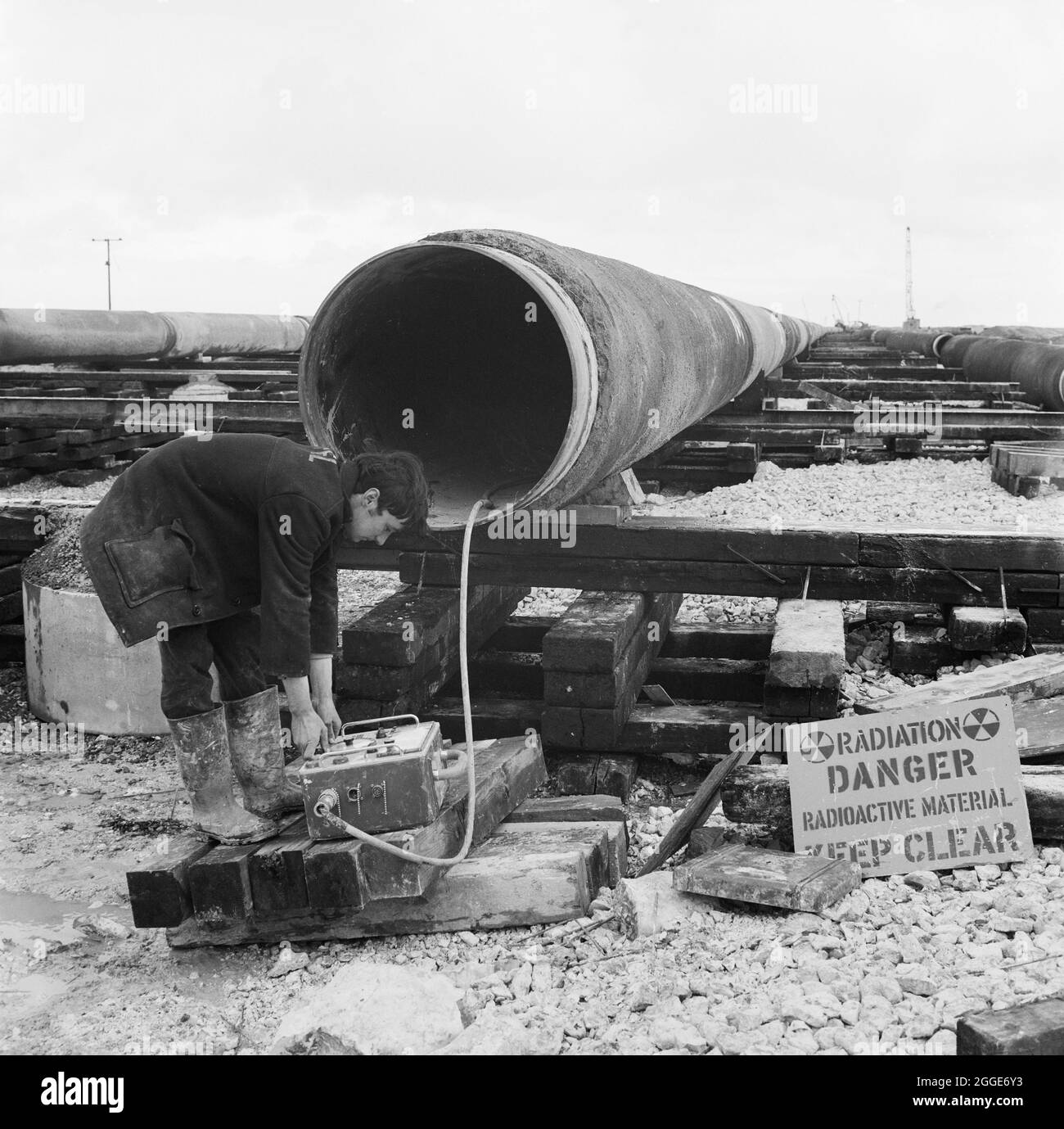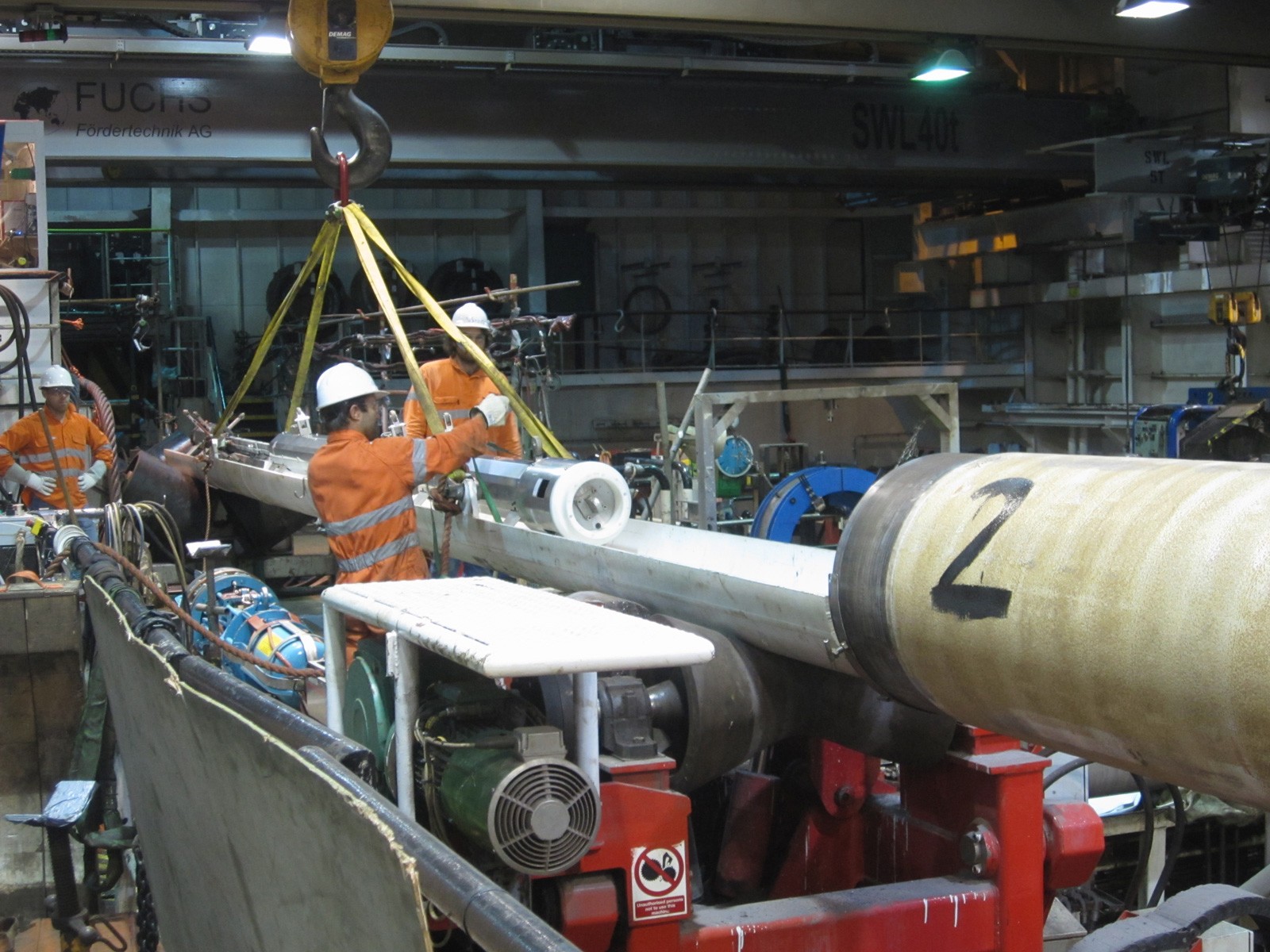Pipeline Welding Inspection: Securing Pipelines with Accuracy and Experience
Pipeline Welding Inspection: Securing Pipelines with Accuracy and Experience
Blog Article
Advanced Techniques in Pipe Welding Inspection: Innovations and Technologies for Improved Precision and Dependability in Weld Assessment
The landscape of pipeline welding assessment is going through a considerable change, driven by sophisticated methods that promise to enhance both precision and integrity in weld analyses. Innovations such as automated evaluation systems and advanced imaging technologies are redefining conventional methods, while non-destructive testing methods ensure material integrity is maintained.

Significance of Weld Evaluation
Making certain the integrity of pipe welds is vital to the total safety and dependability of industrial systems. Welds function as the structural foundation of pipes, which carry a range of liquids under differing stress. Problems in welding can bring about disastrous failures, resulting in not only significant financial losses yet also potential environmental catastrophes and risks to public security. Consequently, rigorous evaluation of welds is essential to the lifecycle of pipeline infrastructure.
The value of weld examination expands past simple compliance with governing requirements. It acts as a proactive procedure to recognize and fix imperfections, such as incomplete blend, porosity, or fractures, before they rise into serious concerns. Efficient examination methods likewise add to the durability of pipelines, decreasing upkeep expenses and boosting functional effectiveness.
Additionally, comprehensive weld evaluations foster trust amongst stakeholders, including governing bodies, financiers, and the communities offered by these pipelines. By making certain that all welds fulfill the required standards, companies can alleviate threats and copyright their track records. In summary, weld inspection is important not only for operational integrity yet likewise for the more comprehensive effects it holds for security and ecological stewardship.
Automated Inspection Solutions
The integration of computerized inspection systems in pipeline welding has actually revolutionized the strategy to making certain weld quality and stability. These systems use advanced robotics and fabricated intelligence to perform evaluations that are not just quicker yet likewise more consistent than typical techniques. Automated systems can cover comprehensive sizes of pipes efficiently, catching information that human assessors might ignore as a result of exhaustion or environmental problems.
One of the key advantages of automatic examination systems is their ability to operate in dangerous atmospheres, minimizing the threat to human inspectors. They utilize various non-destructive testing (NDT) strategies, such as ultrasonic screening and magnetic fragment assessment, to assess weld integrity without compromising the structure. The information gathered is refined in real-time, enabling for immediate feedback and punctual restorative activities when problems are determined.
Additionally, automated systems promote the standardization of examination processes, guaranteeing that each weld is evaluated against consistent standards. This not only enhances the integrity of results yet also improves compliance with regulative criteria. As industries remain to prioritize safety and operational performance, the duty of automated inspection systems in pipeline welding will undoubtedly expand, paving the way for extra innovative quality assurance methodologies.
Advanced Imaging Technologies
Frequently utilized in contemporary pipe welding assessments, progressed imaging technologies have actually dramatically enhanced the capacity to identify and analyze weld defects. Strategies such as electronic radiography, computed tomography, and thermographic imaging provide assessors with high-resolution pictures that reveal sub-surface defects and architectural variances helpful site that might be undetectable to the nude eye.
This leads to much faster examinations and enhanced precision in identifying critical defects. Calculated tomography, on the various other hand, offers three-dimensional imaging, enabling inspectors to envision complicated geometries and evaluate the honesty of welds from numerous angles.
Thermographic imaging utilizes infrared innovation to discover variants in temperature, identifying areas of potential weak point or anxiety within the weld. These sophisticated imaging innovations not just improve problem discovery rates however likewise decrease the time and resources required for pipeline evaluations. Therefore, they play a crucial function in maintaining pipeline safety and security and integrity, guaranteeing compliance with market standards while minimizing operational risks.
Non-Destructive Checking Methods
Using numerous strategies, non-destructive screening (NDT) techniques are important in pipe welding assessments, permitting the evaluation of weld stability helpful hints without endangering the product's architectural integrity. NDT encompasses a series of methods, including ultrasonic screening (UT), radiographic testing (RT), magnetic particle screening (MT), and color penetrant screening (PT) Each method has distinct advantages and applications relying on the particular needs of the examination.
Ultrasonic screening makes use of high-frequency acoustic waves to spot inner problems, providing exact dimensions of weld density and integrity. Pipeline Welding Inspection. Radiographic screening utilizes X-rays or gamma rays to create photos of the weld, disclosing internal flaws that might not be visible externally. Magnetic particle screening is reliable for detecting surface area and near-surface interruptions in ferromagnetic products, while dye penetrant testing highlights surface area splits by utilizing a tinted color
Including these NDT methods into pipe welding evaluations enhances the accuracy and dependability of weld analyses, ensuring that possible failures are determined early. As markets require greater criteria for safety and performance, the function of NDT in preserving the honesty of welded structures proceeds to be critical in pipeline building and maintenance.

Future Trends in Weld Analysis
As we want to the future of weld assessment, developments in innovation are positioned to reinvent the methods employed for assessing pipe honesty. The combination of synthetic intelligence (AI) and artificial intelligence in assessment processes is anticipated to improve the accuracy of problem detection More Info and predictive upkeep. These technologies permit for real-time data evaluation, making it possible for assessors to determine possible problems prior to they rise right into substantial troubles.
Additionally, making use of drones furnished with sophisticated imaging systems is gaining traction. These aerial assessments can cover substantial locations promptly, capturing high-resolution images and information that can be analyzed for flaws in hard-to-reach locations. This not just enhances security however also increases effectiveness in the examination procedure.
In addition, the advancement of smart sensors installed in pipe systems offers the possibility for continuous surveillance. These sensors can detect changes in stress, temperature level, and resonances, offering important insights into the health and wellness of the welds in time.

Conclusion
In conclusion, the assimilation of innovative methods in pipeline welding examination significantly boosts the precision and dependability of weld assessments. Innovations such as automated assessment systems, progressed imaging technologies, and non-destructive screening approaches play a crucial function in boosting defect detection rates and cultivating aggressive upkeep methods. As these technologies remain to evolve, they will certainly additionally make sure the security and effectiveness of pipe systems, inevitably contributing to the stability of important facilities.

Report this page